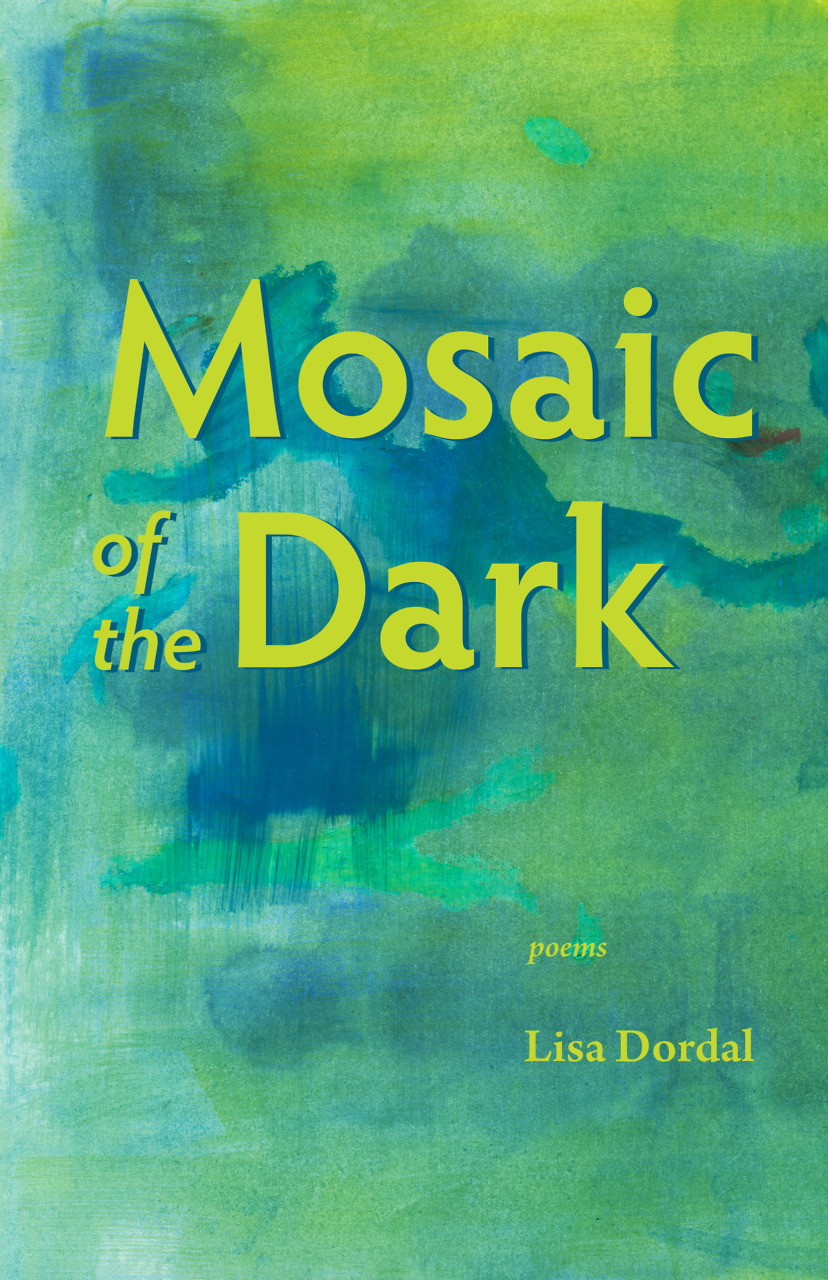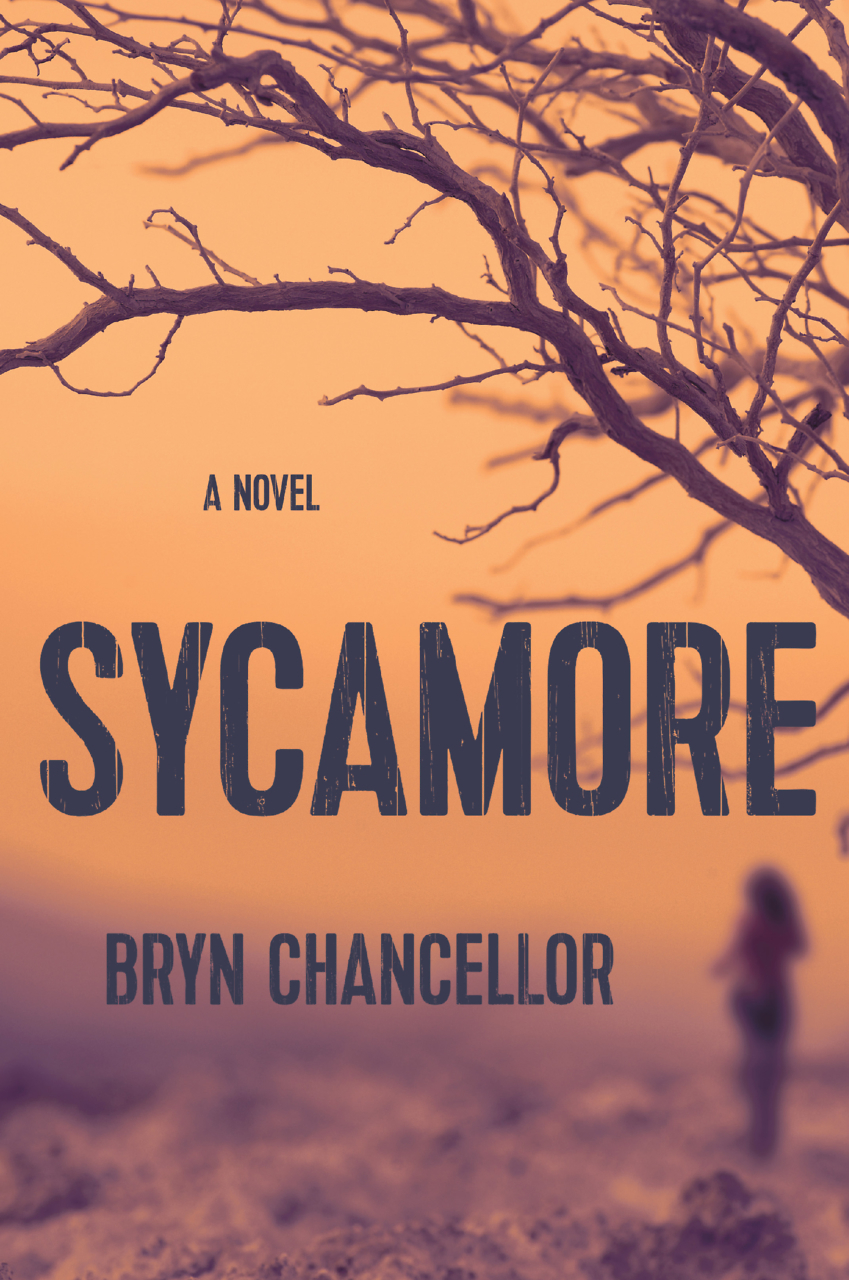Picturing Poetry
Jesse Mathison gets his priorities straight with a new book of verse and images
You probably know a poet who’s published a handsome, austere chapbook with a card-stock cover and perfect center staples. While this form still remains the go-to vehicle for young writers who want to get their poems into the world, Nashville poet Jesse Mathison has taken a different tack, teaming up with a group of visual artists on a new project that combines Mathison’s text with their imagery. Priorities is both a book of poetry accompanied by art and a book of art accompanied by poetry.
 The title of the striking little volume is more a question that alludes to a statement of intent than an already-decided ordering of these elements. The text and the images contradict, coerce, command, and communicate with each other in a manner that attempts to create a whole from the various parts contained between the covers. The project is full of surprises, and it marks a successful collaboration between Mathison and a group of visual artists who together form the Creek collective. In the book’s introduction, Mathison writes that Priorities was conceived around certain themes: “beauty, honesty, selfishness, and what we termed love beyond reason.” Following the introduction is an epigraph by Kurt Vonnegut that enlarges this idea: “We are healthy only to the extent that our ideas are humane.”
The title of the striking little volume is more a question that alludes to a statement of intent than an already-decided ordering of these elements. The text and the images contradict, coerce, command, and communicate with each other in a manner that attempts to create a whole from the various parts contained between the covers. The project is full of surprises, and it marks a successful collaboration between Mathison and a group of visual artists who together form the Creek collective. In the book’s introduction, Mathison writes that Priorities was conceived around certain themes: “beauty, honesty, selfishness, and what we termed love beyond reason.” Following the introduction is an epigraph by Kurt Vonnegut that enlarges this idea: “We are healthy only to the extent that our ideas are humane.”
Following immediately after the Vonnegut epigraph is Daniel Holland’s painting “American Grit,” an abstract field of pinks, blues, whites, and blacks. The cotton-candy chaos is occasionally and abruptly interrupted by flashes of imagery: a feathered cap roughly drawn at the top of the canvas, a crimson splotch like a deflated heart. The use of text in the artwork itself is noteworthy here, and Holland’s “grit” echoes Mathison’s:
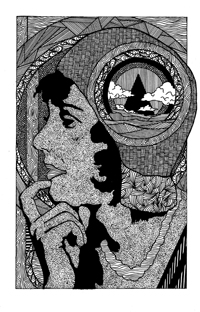 …rectangular men
…rectangular men
with jagged thoughts
and moldy hearts,
their crooked words
irregular.
The visual highlights of Priorities are Casey Pierce’s paintings. The artist’s contemporary narrative scenes are created on large—sometimes massive—canvases, and the power they maintain even as page-size pictures indicates both the appeal of Pierce’s imagined subjects and his ever-increasing technical skills as a painter. The project shows his work in a new, quasi-illustrative context, one that fits Mathison’s images surprisingly well.
In fact, all of the book’s images are visually poetic. “Tortoise and Hare” pictures Pierce and fellow Nashville painter David Hellams riding cowboy-style, side-by-side on the twin orange and yellow circles that make up Mastercard’s unmistakable logo. The action is reminiscent of the Hoppity Hop, an inflated ball with a handle, that kids would ride in the 1970s, and perhaps Pierce is suggesting that our debt-fueled economy is at least as filled with hot air as those vintage rubber steeds. The image accompanies a poem that reads, in part,
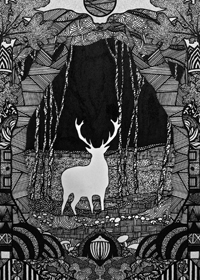 Earn a dollar
Earn a dollar
owe a thousand
then work harder.
Trust us,
the system works.
Don’t think too much.
Two pieces by Aaron Martin create a diptych-like pairing at the center of the book. While “Invitation” and “Daydreamer” are clearly separate black-and-white drawings, one can’t help but seek stylistic connections between juxtaposed works by the same artist—an impulse that’s doubled with a volume featuring varied artists whose works rarely synch so well side-by-side. “Invitation” and “Daydreamer” look like design projects that borrow self-consciously from both current trends and their antecedents. “Invitation” pictures the silhouette of a stag standing at the threshold of a highly stylized, geometric cave entrance. “Daydreamer” is a portrait of a short-haired girl wearing a small 1920’s-style hat that opens into what might be an absinthe-fueled cutaway of a distant landscape complete with an ominous onyx pyramid looming in the distance. The pieces are paired with these lines by Mathison:
I sit honeyed nights at typewriters
thinking of Russian Winters
and men going crazy in tiny rooms,
writing murderous thoughts
of love and anguish
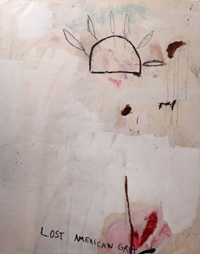 By now it’s clear that Mathison wears his poetic influences on his sleeve: in addition to Vonnegut, he name-checks Charles Bukowski and writes rants that might come straight out of Ginsberg:
By now it’s clear that Mathison wears his poetic influences on his sleeve: in addition to Vonnegut, he name-checks Charles Bukowski and writes rants that might come straight out of Ginsberg:
Where once beauty wandered
she now stumbles,
alone and often broken
progress upon progress!
money
my god!
my savior!
my love!
all roads lead to death and Rome.
Mathison’s work has more in common with contemporary spoken-word performers and the old-school Beats than with traditional literary poets, and that’s what makes this collaboration of art and words such a smart one. These verses would clearly emerge more effective in performance than they do on plain white pages, but pairing them with a diverse collection of bold artworks brings a wild vitality to the collection. In this context, Mathison’s lines have something to interact with in the same way that spoken-word artists often use musical accompaniment as an aural substrate for their rants and rhymes. Mathison matches written words to visual music, and the whole is more than the sum of the parts.
Jesse Mathison and Creek will host an exhibition and book-release party for Priorities on May 3 at 6 p.m. at the Frothy Monkey in downtown Nashville.

